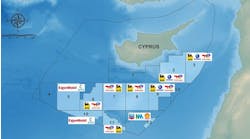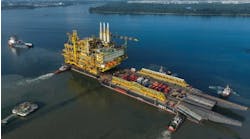Offshore staff
NEDLANDS, Australia – Papua New Guinea (PNG) has started negotiations with Twinza over fiscal terms for the Pasca A gas/condensate field development in the Gulf of Papua.
Twinza’s PNG country manager Roppe Uyassi said that once a gas agreement and the petroleum development license are in place, the project could transition to the FEED phase later this year.
This would be PNG’s first offshore development project: matters to be discussed include the domestic market commitment, providing third-party access to facilities, and national content.
Twinza is promoting Pasca A as an infrastructure ‘hub’, with spare capacity at the facilities offered to operators of other discoveries to lower their costs. The company claims that various offshore fields, including Pandora, could be commercial if tied into the Pasca infrastructure.
In May, the company reported that the PNG National Executive Council had endorsed the submission for development of Pasca A.
The work program to date has included the successful drilling of the Twinza-operated Pasca A4(AD-1) well in early 2018, the fourth drilled on the field and confirming hydrocarbon volumes and the quality of the liquids-rich gas.
Under the company’s proposal the field would produce around 200,000 metric tons/yr (220,462 tons) of liquefied petroleum gas with volumes supplied to the local market, in place of some presently imported cargoes.
Gas would be exported using FLNG technology.
Pasca A is a carbonate pinnacle reef discovered around 50 years ago but basically neglected for nearly three decades due to concerns over development economics.
However, according to Twinza, improvements in drilling efficiency, production technology, and development engineering have transformed the field’s technical and commercial viability.
The location is in relatively a shallow water depth of 93 m (305 ft) and with benign tropical metocean conditions, 95 km (59 mi) from the shore, and with liquids-rich content in the gas.
Twinza used historical data from the three wells drilled and previous 2D seismic surveys to improve its understanding of the field, adding 3D seismic data, and modern core analysis techniques including derivation of digital rock properties.
The company plans to drill two production wells and an injector for the development, tied back to a minimal wellhead platform.
The latter would be braced to an adjoining self-installing platform housing the processing and utilities topsides. Condensate and LPG extracted from the gas during Phase I would be stored on an FSO vessel accessible from the platform via a retractable gangway, while residual dry gas would be reinjected into the reservoir.
Under the proposed second phase, a floating liquefaction storage and offloading (FLSO) vessel would be moored close to the central processing facility with the residual gas re-routed via a flowline to the FLSO. At the same time, the injection well would be converted to a production role by reversing the direction of flow in the well.
07/30/2020



